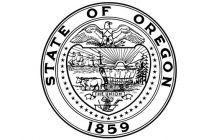(Photo | Pexels)
Work hard, play hard, right? Isn’t that why most of us moved to Bend and our beautiful surrounding areas? What is the reality of this vision? How many professionals here and elsewhere have found the magical key to work-life balance? Conversely, how many find themselves burned out through abundant focus placed upon “work hard?”
Add the year-end pressure cooker of deadlines and unmet expectations and burnout could become a reality. The World Health Organization (WHO) has identified workplace burnout as an “occupational phenomenon,” that may warrant medical attention.
According to WHO: “Burnout is a syndrome conceptualized as resulting from chronic workplace stress that has not been successfully managed. Burnout has three characteristics, feelings of depleted energy or exhaustion; increased mental distance from one’s job and/or negativity or cynicism about one’s job; and reduced professional efficiency.”
Primary causes can be perceived unfair treatment at work, unreasonable deadlines, unmanageable workload and lack of support from managers. Add to that the stress that comes with 24/7 access to work, through emails and texts, and expectations to respond during off-hours.
A recent Gallup study of nearly 7,500 full-time employees found that 23 percent reported feeling burned out at work very often or always, while an additional 44 percent reported feeling burned out sometimes.
According to a Harvard Business School survey, 94 percent of service professionals put in 50+ hours a week. And while some people claim long hours are necessary, study after study shows that when we lose work-life balance, everyone suffers the consequences.
With the following statistics from the RescueTime blog (after studying 185 million hours of working time), it’s no wonder why so many workers are not fully engaged, fulfilled or enthusiastic; the lack of which can lead to burnout.
- Workers average just 2 hours and 48 minutes of productive device time a day
- 21 percent of working hours are spent on entertainment, news and social media
- 26 percent of work is done outside of normal working hours
- Workers average at least one hour of work outside of working hours on 89 days/year (and on 50 percent of all weekend days)
- We check email and IM, on average, every six minutes
- 40.1 percent of our day is spent multitasking with communication tools
Why are so many American workers burned out, what contributes to burnout, why is it typically discovered too late and what can we do about it? How can leaders prevent a prevalence of burnout in their organizations? Consider one or more of my Top ‘7’ Tips.
Recognize the signs. These include one or more of the following: unusually low energy or fatigue; reduced performance/productivity; uncharacteristic impatience with others; faltering relationships with colleagues; or sudden micromanaging or increased absenteeism. If you suspect impending burnout in an employee, work with them to adjust workload, deadlines, expectations (theirs and yours) and perhaps time off. Listen and lead.
Demonstrate that you care. Make it a point to get to know your employees on a personal level. Allow them the opportunity to get to know you. It’s easier to see when they’re struggling during casual conversations. If you don’t show them that you care, employees may feel intimidated approaching you with personal or work-related problems that could be easily managed.
Provide role options. Check often whether this person is in the right role given their specific set of goals, strengths and skills. Perhaps they’ve outgrown their current role and are ready for a new challenge. Or their role may have outgrown them. What has changed over the past year? Where have they grown? What do their struggles indicate? Perhaps a need for change?
Check in on employee engagement. Workers who are truly engaged spend about four times as many hours doing what they do best every day. Typical annual reviews fail to ascertain whether employees feel happy, motivated and inspired by their work. Are they eager to come into work? Are they on the verge of burnout? What, if anything, is missing? Ask them. Then listen.
Lead by example. Demonstrate to your employees that it’s important to take time off to relieve stress; to have a life and interests outside of work; to be vulnerable in not having all the answers; to have healthy and supportive relationships at work; and that it’s ok to ask questions, challenge you and also be light and joyful at times.
Create a culture of celebrating successes. Too often leaders only focus on the big-picture successes while employees are creating small successes every day. Recognizing these small milestones will lead to increased job fulfillment and greater successes down the line. Daily, clients boast of small successes they’ve experienced that went unnoticed due to the focus on the superstars or higher-level executive team achievements.
Notice your own burnout. Leaders are not immune to burnout, especially this time of year. Recognize your own symptoms, especially your increased demands, disappointments or impatience placed upon others. Know when you need a vacation, a few days away to revive.
Two bonus tips for your employees. 1) Recognize your own impending burnout, and develop a plan to change your circumstance and discuss with your manager. 2) Create one or more strong relationships at work, a confidential strategic advisor with whom you can solicit feedback, share information and check troubling observations or assumptions.
The bottom line for leaders and employees alike is that creating strong relationships, having people you can trust and rely on at work, goes a long way toward preventing burnout. Take time to ask questions, listen and observe what’s not being said.
I challenge you to pay closer attention to yourself and your people. Burnout is real, sneaks up slowly and then bam, there it is. Ripple damages affect more than the individual experiencing it. Be the leader your team needs you to be. Focus on early detection, discuss it openly with your team and take positive preventative actions. You and your entire company will benefit.
Executive and Leadership Coach Ann Golden Eglé, MCC, has steered highly successful individuals to greater levels of success since 1998. Ann is President of Golden Visions & Associates, LLC, can be reached at 541-385-8887, ann@gvasuccess.com or gvasuccess.com. Subscribe to Ann’s internationally acclaimed ‘Success Thoughts’ e-zine on her website.





